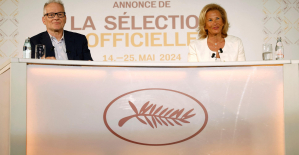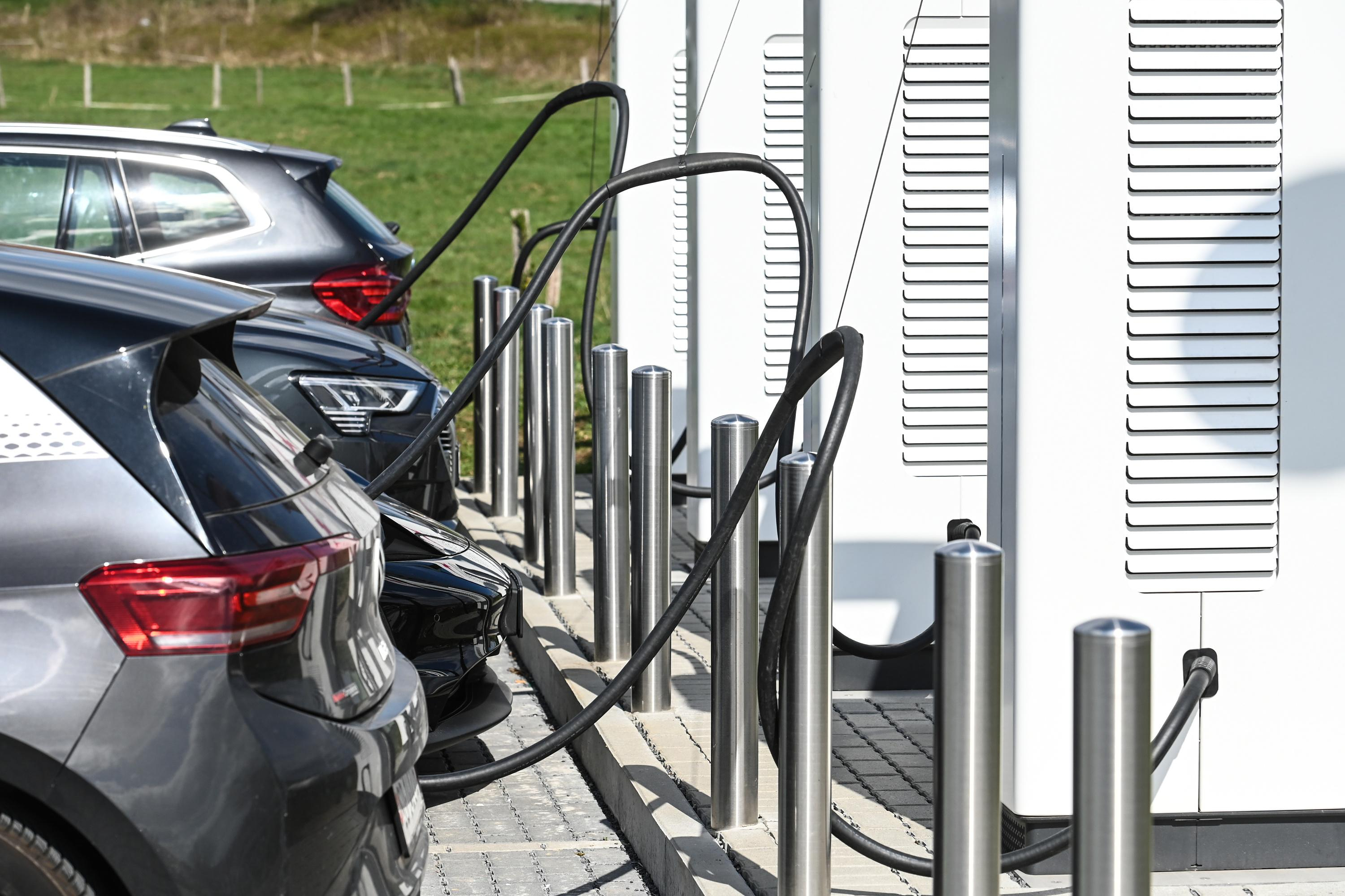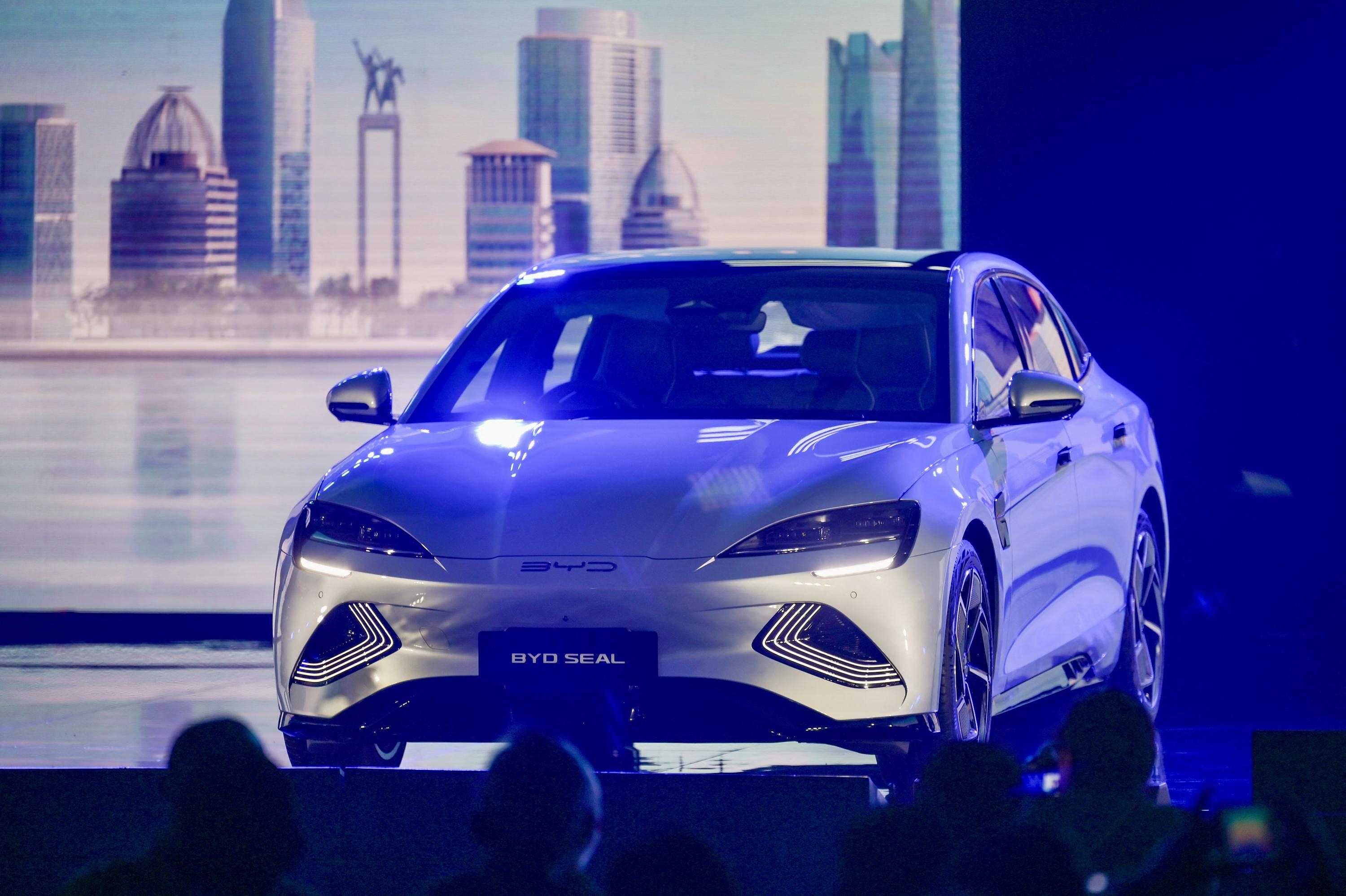In a context of energy crisis, the risk of short power cuts is envisaged this winter in France. In January, according to forecasts published last week by the electricity network operator RTE, EDF should be able to supply 40 gigawatts (GW) - or 65% of installed nuclear capacity - instead of the 55 GW initially announced in September. Usually, at this time of the year, "we are more around 50 or even, at most, 60 GW. However, with 40 GW, we do not have much room for maneuver", confirmed the president of the Energy Regulation Commission Emmanuelle Wargon, at the microphone of Franceinfo, November 19.
The French nuclear fleet is indeed far from operating at full capacity. Thirty reactors out of 56 are currently in service, the maintenance of the plants having been delayed. The fault is the health crisis, the corrosion problems encountered generically on the most recent reactors and, to a lesser extent, a social movement in October. Imports of gas and electricity, largely disrupted by the consequences of the war in Ukraine and by the dependence of European states on Russian gas, are therefore at the center of attention.
The French electricity transmission network is now linked to those of six other European countries: the United Kingdom, Belgium, Germany, Italy, Spain and Switzerland, as underlined by the Energy Regulation Commission. France thus has nearly 50 cross-border links.
France and England have been linked since 1986 by the France-England "IFA 2000" direct current interconnection with a capacity of 2,000 megawatts. However, since January 22, 2021, a new submarine link over 200 kilometers and underground over about thirty kilometers, the IFA2 link, connects Lower Normandy to the south coast of England. It has a capacity of 1000 MW in direct current. This Saturday, November 26, at 6 a.m., France thus imported 2927 MW thanks to these links. France also imports electricity thanks to the infrastructures connecting it to Spain (2,960 MW at 6 a.m. this Saturday) and to Belgium and Germany (7,122 MW). In the opposite direction, it exported, still according to the same statement, to Italy (3218 MW) and Switzerland (3476 MW).
These data fluctuate according to the needs of the countries. For example, during very cold weather at the end of January 2019, imports of electricity produced in neighboring countries made it possible to cover the peak of consumption in France, at 7 p.m. Conversely, a month later, in February 2019, during a decline in wind power production in Spain and Italy, it was France that helped them out. With several uncertain winters looming, three new electricity interconnection projects between France and its partners have been approved and are being developed.
This Friday, November 25, Paris and Dublin have reached an agreement to launch the future electrical interconnection "Celtic Interconnector" which will connect the Irish network to the European continent by 2026, announced the French Ministry of Energy Transition. This 700 MW high-voltage submarine link will directly link, over 575 km, the southern coast of Ireland to the north of France. Ireland will thus be able to export electricity produced by offshore wind turbines.
This "first interconnection of Ireland with continental Europe (...) will allow the import and export of enough electricity to supply 450,000 households", indicated the ministry in a joint press release with the Irish authorities, the European Investment Bank and network operators. The interconnection will connect the town of La Martyre, in Brittany, to the village of Knockraha, in County Cork. This connection is part of the context of the United Kingdom's exit from the European Union, while Ireland is so far only connected to its British neighbor.
The agreements provide for construction with Siemens Energy and Nexans, the French cable manufacturer, and a financial contribution of 800 million euros by the European Investment Bank, Danske Bank, Barclays and BNP. Developed by EirGrid and RTE, the two public electricity transmission operators of Ireland and France, the project, whose work will begin in 2023 for commissioning in 2026, has a total cost of 1.623 billion euros. euros. This interconnection "will use 320 kV HVDC (high voltage direct current) technology, using a 500 km submarine cable as well as a 40 km underground land cable in Brittany and another 35 km in County Cork", explained Nexans.
On the Italian side, RTE launched in 2015, with its counterpart TERNA, the construction site of the Savoie-Piedmont line. That is 190 km of direct current connection entirely underground which will connect the electrical substations of Grand-Île (Sainte-Hélène du Lac) to Piossasco (Turin). A world record. Objective: to provide a lasting response to the saturation of exchange capacities between the two countries, Italy requiring a lot of electricity from France.
Power level, this Franco-Italian cable represents an import and export capacity of 1200 MW, the equivalent of a nuclear reactor or the consumption of an agglomeration like that of Lyon. It will allow a 40% increase in the electricity exchange capacity between the two countries. The cost of the project amounts to 500 million euros of investment in France, and as much in Italy. The works are coming to an end. RTE is planning partial commissioning in the 4th quarter of 2022 (at half capacity) and full-load commissioning in 2023.
The electricity interconnection project between France and Spain called "Gulf of Biscay", led by RTE and its Spanish counterpart REE (Red Eléctrica de España), should make it possible to double electricity exchanges between the two countries - while by optimizing the use of Iberian wind generation - to increase them to 5,000 MW. "That is to say enough to supply around 5 million households", according to RTE. Approximately 400 km long, the interconnection will be buried in the ground or at the bottom of the ocean, in order to connect the Cubnezais substation (near Bordeaux) to that of Gatika (near Bilbao) by 2026. A public inquiry into the project is due to take place at the end of 2022.

 Germany: the trial of an AfD leader, accused of chanting a Nazi slogan, resumes this Tuesday
Germany: the trial of an AfD leader, accused of chanting a Nazi slogan, resumes this Tuesday New York: at Columbia University, the anti-Semitic drift of pro-Palestinian demonstrations
New York: at Columbia University, the anti-Semitic drift of pro-Palestinian demonstrations What is Akila, the mission in which the Charles de Gaulle is participating under NATO command?
What is Akila, the mission in which the Charles de Gaulle is participating under NATO command? Lawyer, banker, teacher: who are the 12 members of the jury in Donald Trump's trial?
Lawyer, banker, teacher: who are the 12 members of the jury in Donald Trump's trial? What High Blood Pressure Does to Your Body (And Why It Should Be Treated)
What High Blood Pressure Does to Your Body (And Why It Should Be Treated) Vaccination in France has progressed in 2023, rejoices Public Health France
Vaccination in France has progressed in 2023, rejoices Public Health France Food additives suspected of promoting cardiovascular diseases
Food additives suspected of promoting cardiovascular diseases “Even morphine doesn’t work”: Léane, 17, victim of the adverse effects of an antibiotic
“Even morphine doesn’t work”: Léane, 17, victim of the adverse effects of an antibiotic Orthodox bishop stabbed in Sydney: Elon Musk opposes Australian injunction to remove videos on X
Orthodox bishop stabbed in Sydney: Elon Musk opposes Australian injunction to remove videos on X One in three facial sunscreens does not protect enough, warns L'Ufc-Que Choisir
One in three facial sunscreens does not protect enough, warns L'Ufc-Que Choisir What will become of the 81 employees of Systovi, a French manufacturer of solar panels victim of “Chinese dumping”?
What will become of the 81 employees of Systovi, a French manufacturer of solar panels victim of “Chinese dumping”? “I could lose up to 5,000 euros per month”: influencers are alarmed by a possible ban on TikTok in the United States
“I could lose up to 5,000 euros per month”: influencers are alarmed by a possible ban on TikTok in the United States Dance, Audrey Hepburn’s secret dream
Dance, Audrey Hepburn’s secret dream The series adaptation of One Hundred Years of Solitude promises to be faithful to the novel by Gabriel Garcia Marquez
The series adaptation of One Hundred Years of Solitude promises to be faithful to the novel by Gabriel Garcia Marquez Racism in France: comedian Ahmed Sylla apologizes for “having minimized this problem”
Racism in France: comedian Ahmed Sylla apologizes for “having minimized this problem” Mohammad Rasoulof and Michel Hazanavicius in competition at the Cannes Film Festival
Mohammad Rasoulof and Michel Hazanavicius in competition at the Cannes Film Festival Skoda Kodiaq 2024: a 'beast' plug-in hybrid SUV
Skoda Kodiaq 2024: a 'beast' plug-in hybrid SUV Tesla launches a new Model Y with 600 km of autonomy at a "more accessible price"
Tesla launches a new Model Y with 600 km of autonomy at a "more accessible price" The 10 best-selling cars in March 2024 in Spain: sales fall due to Easter
The 10 best-selling cars in March 2024 in Spain: sales fall due to Easter A private jet company buys more than 100 flying cars
A private jet company buys more than 100 flying cars This is how housing prices have changed in Spain in the last decade
This is how housing prices have changed in Spain in the last decade The home mortgage firm drops 10% in January and interest soars to 3.46%
The home mortgage firm drops 10% in January and interest soars to 3.46% The jewel of the Rocío de Nagüeles urbanization: a dream villa in Marbella
The jewel of the Rocío de Nagüeles urbanization: a dream villa in Marbella Rental prices grow by 7.3% in February: where does it go up and where does it go down?
Rental prices grow by 7.3% in February: where does it go up and where does it go down? Europeans: “All those who claim that we don’t need Europe are liars”, criticizes Bayrou
Europeans: “All those who claim that we don’t need Europe are liars”, criticizes Bayrou With the promise of a “real burst of authority”, Gabriel Attal provokes the ire of the opposition
With the promise of a “real burst of authority”, Gabriel Attal provokes the ire of the opposition Europeans: the schedule of debates to follow between now and June 9
Europeans: the schedule of debates to follow between now and June 9 Europeans: “In France, there is a left and there is a right,” assures Bellamy
Europeans: “In France, there is a left and there is a right,” assures Bellamy These French cities that will boycott the World Cup in Qatar
These French cities that will boycott the World Cup in Qatar Serie A: Bologna surprises AS Rome in the race for the C1
Serie A: Bologna surprises AS Rome in the race for the C1 Serie A: Marcus Thuram king of Italy, end of the debate for the position of number 9 with the Blues?
Serie A: Marcus Thuram king of Italy, end of the debate for the position of number 9 with the Blues? Milan AC-Inter Milan: Thuram and Pavard impeccable, Hernandez helpless… The tops and flops of the derby
Milan AC-Inter Milan: Thuram and Pavard impeccable, Hernandez helpless… The tops and flops of the derby Ligue 2: Auxerre leader, Bordeaux in crisis, play-offs... 5 questions about an exciting end of the season
Ligue 2: Auxerre leader, Bordeaux in crisis, play-offs... 5 questions about an exciting end of the season


















